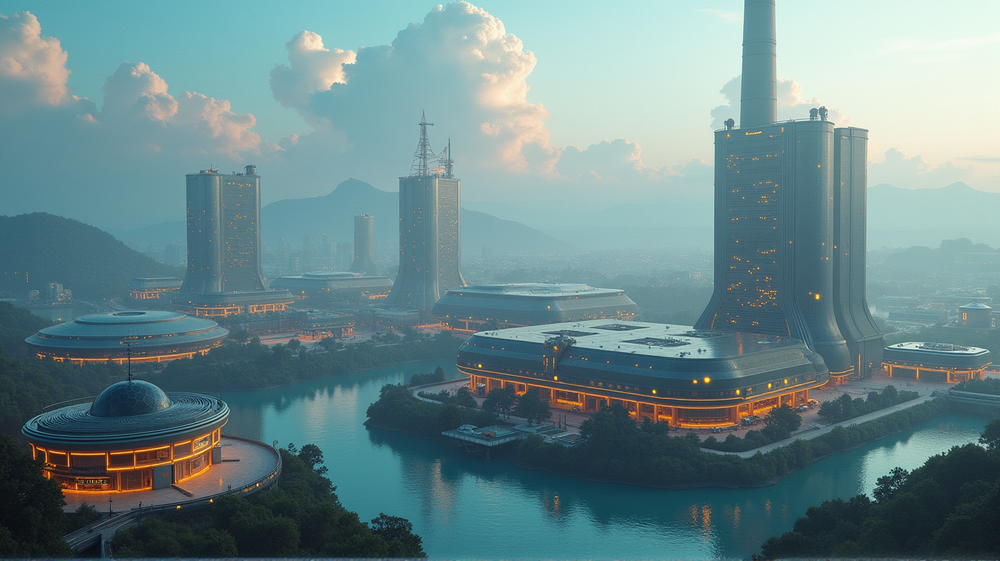The energy landscape is undergoing an atomic transformation, as nuclear power stages a comeback in the face of mounting energy demands from the AI boom. Once shunned for its risks and costs, nuclear energy is now hailed as the linchpin in securing our digital and environmental future, driven by the strategic investments of tech titans like Microsoft, Amazon, Alphabet, and OpenAI. Here’s a dive into this nuclear revival that promises to redefine power generation globally.
A Surge in Nuclear Ambitions
Gone are the days when nuclear energy was dismissed as an unreliable relic. Today, it’s at the forefront of powering our digital dreams. Microsoft, for instance, has strategically committed to drawing energy from a reactivated reactor at the infamous Three Mile Island, touting a 20-year alliance with Constellation Energy. Similarly, Amazon’s venture into nuclear with X-energy reflects Silicon Valley’s growing reliance on these steadfast reactors for uninterrupted power to their sprawling data centers.
Small Modular Reactors: The New Age Powerhouses
The narrative surrounding nuclear energy is shifting, thanks to innovations like Small Modular Reactors (SMRs). These compact reactors, akin to minimalistic tech gadgets, promise efficiency and safety, leading the charge with projects like Bill Gates’ TerraPower in Wyoming, set to energize over 276,000 homes by 2030. Their appeal lies in their cost-effectiveness and factory-built convenience, presenting a dynamic shift from traditional, cumbersome reactors to agile, scalable power solutions.
International Atomic Divide
While the US reinvents its nuclear destiny, China is fast emerging as a global nuclear heavyweight, adding an astounding 80% of the world’s new nuclear capacity over recent years. Meanwhile, Europe embraces a nuclear renaissance, with France and the UK spearheading ambitious projects to significantly expand nuclear’s share in their energy mix. As stated in ZME Science, this global race marks a pivotal moment, as countries vie for nuclear dominance in a climate-conscious world.
Challenges Under the Atomic Hood
Despite this optimistic wave, nuclear energy’s journey is fraught with challenges. The hefty costs and complex supply chains, compounded by geopolitical tensions, pose significant hurdles. A stark reminder is the concentration of uranium enrichment, with Russia holding a formidable 40%, threatening potential supply chain vulnerabilities. Public perception, too, remains a delicate issue, marred by past nuclear mishaps.
Fueling the Digital Frontier
The rise of AI and its insatiable thirst for power has inevitably shifted nuclear energy into the spotlight. It’s not just about sustaining cities; it’s about driving the next-gen digital economy. As electricity demand intensifies, doubling by 2030, the push toward nuclear promises a stable bridge to meet this impending surge, all while aligning with critical climate goals. With nuclear investment set to soar, this renaissance is more crucial than ever before.
While nuclear energy’s path forward may be lined with hurdles, its potential to continuously energize our growing digital lives is undeniable. As big tech banks on atoms ensuring our digital continuity, this nuclear renaissance emerges as not just a comeback, but a revolution embedded in our technological future.













